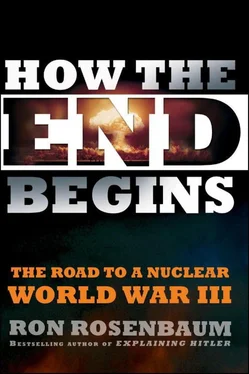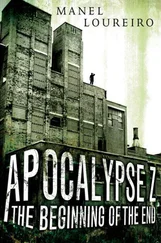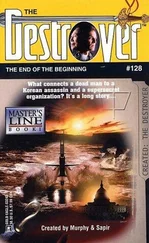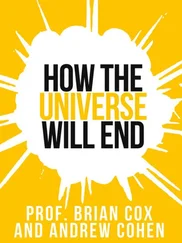Then, a few days after the raid, virtually out of the blue, North Korea, not having been asked, issued a strident protest—almost as if it wished to incriminate itself in the incident. [253]Up till then no one without top secret clearance, nobody publicly, had connected the North Koreans with the alleged reactor, or the reactor’s similarity to one made in North Korea. Stories emerged of a North Korean freighter docking in the northern Syrian port of Tartous shortly before the raid. [254]Some speculated the North Korean freighter’s cargo might have been fuel for the supposed reactor. And another sharp-eyed blogospheric investigator noted that the Web site of the port of Tartous changed the registration of the freighter docking from North Korea to South Korea. It was a change that looked more like a post facto deception than a correction.
The freighter in the fogbank off Tartous: it began to seem like an Eric Ambler espionage novel. Then Hersh wrote a New Yorker piece giving vent to almost all previous varied and conflicting cloak-and-dagger speculations from unnamed sources: there was no reactor, the raid wasn’t targeted on Syria at all, but designed to test electronic countermeasures against Russian-made antiaircraft systems of the sort both Syria and Iran used. [255]Israel wanted to demonstrate to Iran that it could blind their electronic warning and antiaircraft radar defenses with cyber-war measures. Iran may have been the initial target. Take your pick.
What really went on?
Everyone in the know went silent until April 2008, when for some reason (most likely congressional pressure) the heads of the U.S. intelligence community—the CIA head and the new Director of National Intelligence (“connect the dots”)—took it upon themselves to reveal what their agencies knew about this mysterious raid, the enigma of the box-shaped structure it destroyed, and what it meant. [256]And while they were at it, they just happened to want to correct a misinterpretation of the 2007 National Intelligence Estimate on Iran, with its high-profile declaration that—contrary to its previous (2005) NIE on Iran—the intelligence community believed Iran had shut down its nuclear weapons program in 2003.
It was hard to tell which part of their presentation was a cover for the other—the Enigmatic Box or Iran—in this unprecedented briefing for a small group of reporters later released at full length by the intelligence chiefs. It’s a rare inside glimpse into the way the highest U.S. intelligence officials wrestled with the problem of the Enigmatic Box—and their view of the seriousness of the interlocking array of potential nuclear flashpoints triggered by the attack on it. It was a glimpse into the deadly serious business of making estimates about nuclear capabilities and intentions where mistakes can be catastrophic.
The transcript is a remarkable document that reads like a scene from a spy novel, but is even more fascinating for the questions it leaves unanswered. It helps explain why I consider the raid on the enigmatic box the paradigmatic crisis of the second nuclear age, and helps answer the question—if we came so close that night to World War III, what “close” really means.
At the time of the briefing the Israelis still had not admitted the raid took place. The Syrians still denied the enigmatic box concealed a reactor. And Iran—the silent player lurking behind the scenes throughout the crisis—was still denying any designs on an atomic bomb.
The two “senior US intelligence officials” who delivered the briefing were later identified as Mike McConnell, head of the National Intelligence Council (the entity that supervises the CIA), the Defense Department’s DIA (Defence Intelligence Agency), the State Departments NSA (National Security Agency)—every intelligence entity in the U.S. government, and Michael Hayden, the head of the CIA. The briefing was given at CIA headquarters first on a background only basis; the transcript was later declassified. Think of it as a kind of one-act stage play. (Look for the surprising dramatic twist toward the end. Take my bracketed comments as combination stage directions and critic’s notes.)
A note here about the design of the nuclear reactor in question—a “Calder Hall” model. [257]Calder Hall is the name of a small town in West Cumbria, the section of Great Britain that faces the Irish Sea. I happened to be aware of an episode of violence that took place in that West Cumbrian backwater in June 2010, a killing spree by the “PSYCHO CABBIE,” as the tabloid News of the World called him. [258]An ordinary cabdriver, a West Cumbrian Homer Simpson, who in fact had worked at and been fired from the Calder Hall reactor, one morning got up and shot his twin brother, his lawyer, and killed twelve people before shooting himself.
No one could figure out why. But somehow that event connected for me with the problem of the continued existence of nukes. It takes just one deranged human to launch a missile, just one unpredictable neutron split to make a critical mass. That is why every nuclear close call, including the Israeli raid on the Syrian reactor, should be examined carefully for the language used to analyze it. That’s why it is valuable to hear how “senior intelligence officials” speak when they talk shop about nuclear possibilities.
O.D.N.I. (Office of the Director of National Intelligence)
Background Briefing with Senior US Officials on Syria’s Covert Nuclear Reactor and North Korea’s Involvement
APRIL 24, 2008
SENIOR INTELLIGENCE OFFICIAL 1:Hello. My name is [Senior Intelligence Official 1]. [Later identified as Mike McConnell, the chief of the entire U.S. intelligence establishment.] And I have the start-off role. It’s been a pretty busy morning and afternoon, as you might imagine. We’ve been on the Hill having dialogue with our committees. [The congressional intelligence committees basically blackmailed them with a threat of budgetary cut off if they didn’t explain more fully what went on at al-Kibar in the first battlefield nuclear incident of the second nuclear age.]
What I want to do is just frame the issue…. What we’re going to discuss is a nuclear reactor. It was constructed by the Syrians in the eastern desert of Syria along the Euphrates River on the east side. The Syrians constructed this reactor for the production of plutonium with the assistance of the North Koreans. [This—the fact that it was a reactor—had come in for skeptical questioning most prominently by Seymour Hersh in The New Yorker, who seems to have relied on sources out of the loop. The key judgment here is not just that it was a nuclear reactor, but that it was the type of reactor designed to produce plutonium as a by-product that could be used to make nuclear bombs. But the key judgment was buttressed with post-Iraq precision.]
Our evidence goes back an extended period of time. We have had insights to what was going on since very late ’90s, early 2000, 2001 that something was happening. Our issue was pinning it down and being more precise. We had increasing appreciation for what was happening in the 2003, 2006 timeframe. But we still couldn’t quite pin it down, as will become apparent to you when we show you more of the physical evidence that you’ll see in just a moment.
In the spring of last year, we were able to obtain some additional information that made it conclusive. [Note the careful wording of “we were able to obtain.” Most would translate this to: “The Israelis showed us photos taken inside the reactor either by one of their spies or by a bribed or blackmailed Syrian worker.] And so, we engaged in this policy process of now that we have the evidence, what do we do about it? The evidence concluded a nuclear reactor, as I mentioned, constructed by the Syrians, started probably in 2001, completed in the summer of 2007. And it was nearing operational capability. [More than a year later the International Atomic Energy Agency (IAEA) found evidence in soil samples taken from the al-Kibar area of “the presence of uranium.” [259] ]
Читать дальше











